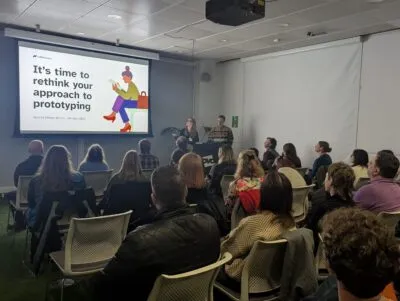There’s a useful clarification here – we’re not talking about the business results e.g. reduce costs. We’re talking about the behaviour that will lead to those results e.g. reduce support calls.
Service Design
Fourth is Service Design. We often see that organisations have established multi-disciplinary product teams working in lean, agile ways. They may have an OKR system in place and may even be outcomes-focused. However, they can still suffer from alignment issues. For example, a common problem is that different teams within the same organisation may be working on the same problem or part of a journey without being aware of it.
This is where Service Design can help – by orchestrating different product teams’ efforts into a coherent, ‘whole service’. Service Designers can help identify duplicate effort, but also gaps where there isn’t a product team focused on an important need.
Process
Finally, we have a process, which Steve Cable and Paul Burrows discussed in our previous webinar. A clear process framework – like GDS’s Discovery, Alpha, Beta and Live – helps teams to retain autonomy. Firstly, it sets the expectations of stakeholders. In a Discovery phase, teams will be focused on learning about users and their problems, not delivering solutions. If stakeholders are clear about this, it means they’ll understand not to expect changes to business results immediately.
Secondly, a process framework like this also helps to establish trust. If leaders are confident that teams are following best practice and the right process, they’ll be reassured. They can focus on understanding where teams are in a process, rather than getting involved in design decisions.
We’ve been working with an organisation to help them shape an approach to continuous delivery. After piloting ways of working, we created a process framework and documented it in an online playbook. That then helped subsequent projects run more smoothly. A really important aspect of this is that this is bespoke to the organisation: It was written after a pilot. And then it was iterated upon after subsequent projects. It’s what works for that particular organisation.
This leads me on to a word of warning:
We shouldn’t let process undermine a focus on outcomes.
Best practice evolves as we learn more about what works and what doesn’t work and as we integrate ideas from different disciplines. We need to allow process to be flexible.










